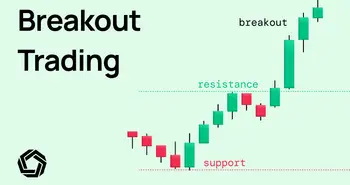What is Basis Trading?

In the ever-evolving world of finance, there are countless trading strategies available to savvy investors. One such strategy that has gained traction in recent years is basis trading. In this ultimate guide, I will break down the concept of basis trading, delve into its mechanics, share strategies for success, highlight common mistakes to avoid, and discuss the future of this fascinating trading strategy.
Understanding the Concept of Basis Trading
At its core, basis trading involves exploiting price discrepancies between two related financial instruments. These instruments typically have a strong correlation, such as a futures contract and its underlying asset. By taking advantage of these discrepancies, basis traders aim to generate profits through strategic trading.
When engaging in basis trading, traders carefully analyze various factors that may influence the price differential between the two instruments. These factors can include supply and demand dynamics, market sentiment, interest rates, and macroeconomic indicators. By gaining a deep understanding of these drivers, basis traders can make informed decisions to capitalize on pricing inefficiencies.
Definition and Importance of Basis Trading
Simply put, basis trading refers to the act of simultaneously buying and selling two related securities or derivatives. The “basis” refers to the difference in price between these two instruments. It is important because it provides an opportunity for investors to profit from the pricing inefficiencies that can occur in the market.
Furthermore, basis trading allows market participants to hedge their risks effectively. By taking offsetting positions in related instruments, traders can mitigate their exposure to price fluctuations in the underlying asset. This risk management aspect of basis trading is crucial for maintaining a balanced and diversified investment portfolio.
The Role of Basis Trading in Financial Markets
Basis trading plays a crucial role in ensuring efficient pricing and liquidity in financial markets. By exploiting pricing discrepancies, basis traders help to bring the prices of related instruments closer together. This, in turn, ensures that the market remains efficient and that participants have access to fair prices.
In addition to promoting market efficiency, basis trading also contributes to price discovery. As basis traders capitalize on mispricings, their actions help reveal valuable information about the true value of the underlying assets. This price discovery mechanism enhances market transparency and fosters a more accurate reflection of supply and demand dynamics.
The Mechanics of Basis Trading
Now that we have a good understanding of the concept, let's dive into the mechanics of basis trading. Basis trading is a popular strategy in the financial markets that involves exploiting the price difference between related instruments to generate profits. Traders use this strategy to capitalize on discrepancies in pricing, aiming to benefit from the eventual convergence of prices.
When it comes to basis trading, there are several key components that traders need to consider. One of the crucial aspects is identifying a suitable pair of related instruments. This pair could consist of a futures contract and its underlying asset, or it could involve two different contracts with varying expiration dates. Once the pair is selected, the trader will execute a basis trade by simultaneously buying one instrument and selling the other, with the expectation of profiting from the price differential.
Components of Basis Trading
In order to execute a basis trade, a trader must identify a suitable pair of related instruments. This could be a futures contract and its underlying asset, or perhaps two different contracts with different expiration dates. Once the pair is chosen, the trader will simultaneously buy one instrument and sell the other.
How Basis Trading Works
To illustrate how basis trading works, let's consider an example involving a futures contract and its underlying asset. If the futures contract is trading at a higher price than the underlying asset, a basis trader would sell the futures contract and buy the asset. The goal is to profit as the prices converge, ultimately generating a profit.
Furthermore, it's essential for basis traders to closely monitor market conditions and factors that may impact the prices of the instruments involved in the trade. Factors such as supply and demand dynamics, market sentiment, and economic indicators can all influence the price relationship between the instruments. By staying informed and conducting thorough analysis, basis traders can make well-informed decisions to maximize their trading opportunities.
Strategies for Successful Basis Trading
Now that we understand the mechanics, let's explore some strategies for successful basis trading.
Basis trading involves taking advantage of pricing discrepancies between related financial instruments, such as futures contracts and their underlying assets. One additional strategy for successful basis trading is to consider historical data and patterns. By analyzing past price movements and correlations between instruments, traders can gain insights into potential future market behavior. This historical perspective can help traders make more informed decisions and anticipate market movements.
Analyzing Market Conditions
One key strategy is to closely analyze market conditions. This includes understanding supply and demand dynamics, as well as closely monitoring any factors that could impact the relationship between the two instruments. By staying informed and conducting thorough analysis, basis traders can identify potential trading opportunities.
Furthermore, another aspect to consider when analyzing market conditions is the impact of external events and news on basis trading. Economic indicators, geopolitical developments, and central bank announcements can all influence the pricing of financial instruments and create trading opportunities. By staying abreast of current events and understanding their potential effects on the market, basis traders can adapt their strategies accordingly and capitalize on market movements.
Risk Management in Basis Trading
Another crucial aspect of basis trading is effective risk management. To mitigate potential losses, basis traders should employ risk management strategies such as setting stop-loss orders and diversifying their trades. By carefully managing risk, traders can protect their capital and increase their chances of success.
In addition to setting stop-loss orders, another risk management technique is to use position sizing effectively. By determining the appropriate size for each trade based on risk tolerance and market conditions, traders can control the amount of capital at risk in each position. This disciplined approach to position sizing can help basis traders avoid excessive losses and preserve their trading capital over the long term.
Common Mistakes in Basis Trading and How to Avoid Them
While basis trading can be rewarding, there are common mistakes that traders should avoid to maximize their profits.
Overlooking Market Volatility
One mistake that many novice basis traders make is underestimating market volatility. The relationship between two related instruments can change rapidly in response to market conditions, so it is essential to carefully consider volatility before entering a trade. Ignoring this factor can lead to unexpected losses.
Ignoring Risk Management Principles
Another critical mistake is ignoring risk management principles. It is important to remember that not all basis trades will be profitable. By implementing risk management strategies, such as clearly defining entry and exit points, traders can limit their losses and protect their capital.
The Future of Basis Trading
As technology continues to advance and global trends impact financial markets, the future of basis trading looks promising.
Technological Advancements and Basis Trading
With the advent of sophisticated trading algorithms and high-frequency trading, basis trading is likely to become even more efficient and widespread. These advancements enable traders to execute trades at lightning-fast speeds and analyze market data with greater precision. Traders who embrace these technologies can potentially gain a competitive advantage in basis trading.
Global Trends Impacting Basis Trading
The rise of international economic integration and the increasing globalization of financial markets will also impact basis trading. As markets become more interconnected, opportunities for basis trading across different geographies will multiply. Traders who are able to navigate global market trends can tap into a wider range of trading opportunities.
FAQ
What is basis trading?
Basis trading involves exploiting price discrepancies between two related financial instruments to generate profits.
Why is basis trading important?
Basis trading plays a crucial role in ensuring efficient pricing and liquidity in financial markets.
What strategies can be employed for successful basis trading?
Strategies for successful basis trading include analyzing market conditions and implementing effective risk management strategies.
What are some common mistakes to avoid in basis trading?
Some common mistakes in basis trading include overlooking market volatility and ignoring risk management principles.
What does the future hold for basis trading?
The future of basis trading looks promising, with technological advancements and global trends opening up new opportunities for traders.
In conclusion, basis trading is a fascinating strategy that offers traders the opportunity to profit from price discrepancies between related financial instruments. By understanding the concept, grasping its mechanics, and employing effective strategies, traders can increase their chances of success in this lucrative field. As the world of finance continues to evolve, basis trading will undoubtedly remain a powerful tool in the trader's arsenal. It's time to take advantage of this powerful trading strategy and unlock your full potential as a savvy investor.
Personal Advice
Throughout my years as a basis trader, I have learned the importance of adaptability and continuous learning. The financial markets are constantly evolving, and it is crucial to stay informed and embrace new technologies. By remaining agile and proactive in your approach, you can navigate the ever-changing landscape and stay ahead of the curve.
Ready to elevate your basis trading strategy with a platform that's as innovative as your approach? Discover Morpher.com, where the fusion of blockchain technology and financial markets creates unparalleled trading opportunities. With zero fees, infinite liquidity, and the ability to engage in fractional investing and short selling, Morpher is designed for the modern trader. Experience the security of a non-custodial wallet, the thrill of up to 10x leverage, and the uniqueness of trading Virtual Futures. Sign Up and Get Your Free Sign Up Bonus today to join a community of traders who are reshaping the future of investing.

Disclaimer: All investments involve risk, and the past performance of a security, industry, sector, market, financial product, trading strategy, or individual’s trading does not guarantee future results or returns. Investors are fully responsible for any investment decisions they make. Such decisions should be based solely on an evaluation of their financial circumstances, investment objectives, risk tolerance, and liquidity needs. This post does not constitute investment advice.

Painless trading for everyone
Hundreds of markets all in one place - Apple, Bitcoin, Gold, Watches, NFTs, Sneakers and so much more.

Painless trading for everyone
Hundreds of markets all in one place - Apple, Bitcoin, Gold, Watches, NFTs, Sneakers and so much more.









